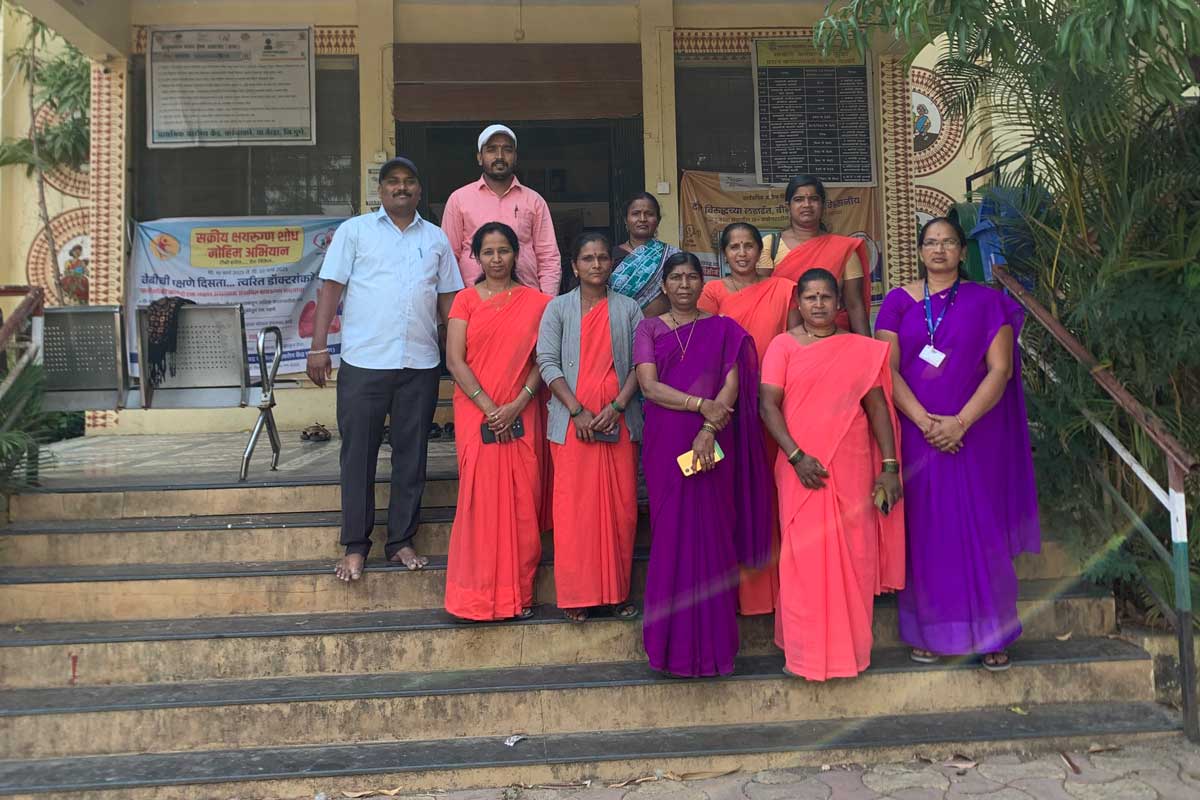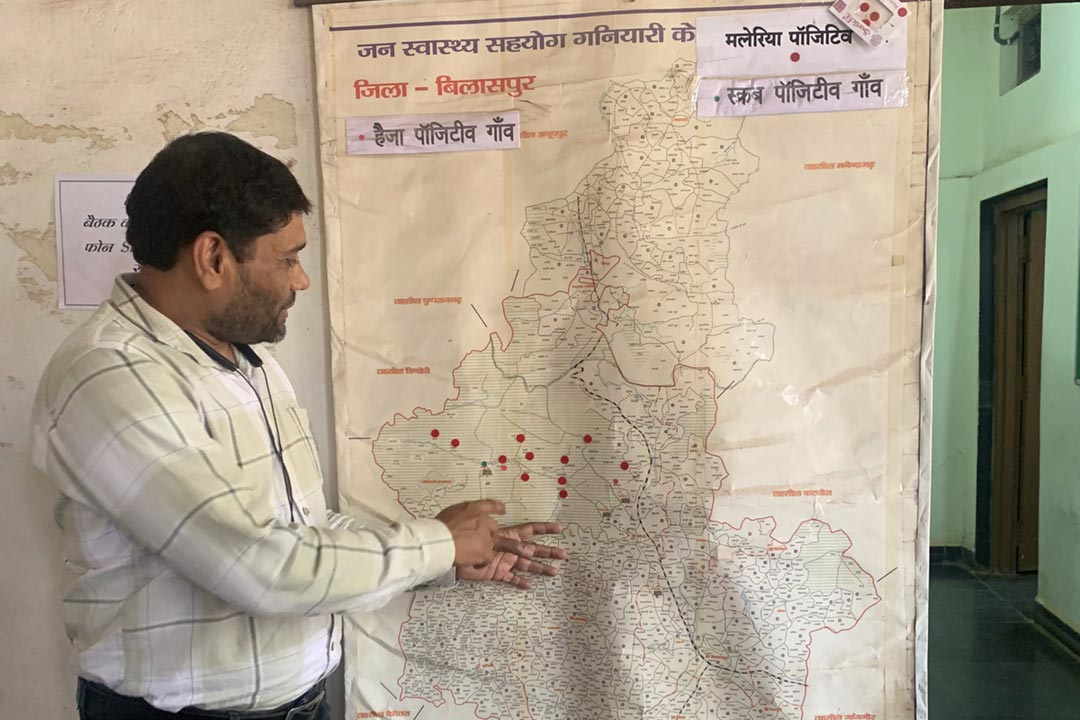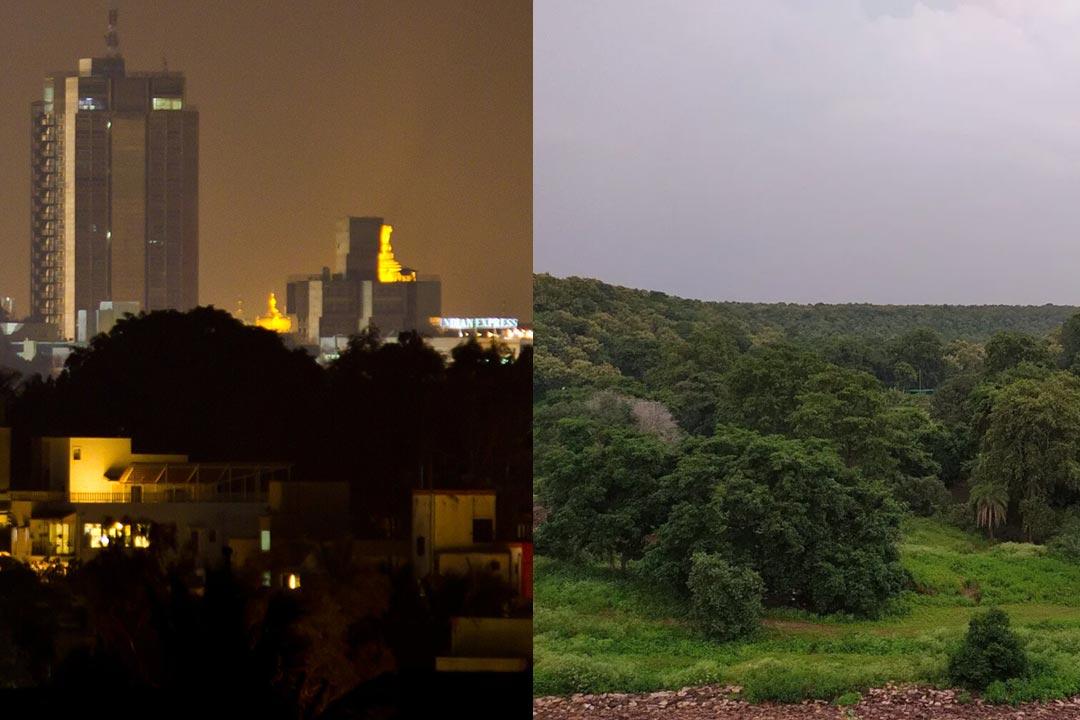How an app built to diagnose COVID-19 is finding babies with pneumonia in rural India
In tribal villages of Chhattisgarh, village-level health workers are deploying the offline mobile app to separate standard coughs and sniffles from more dangerous respiratory signs.
- 3 April 2024
- 5 min read
- by Sweta Daga
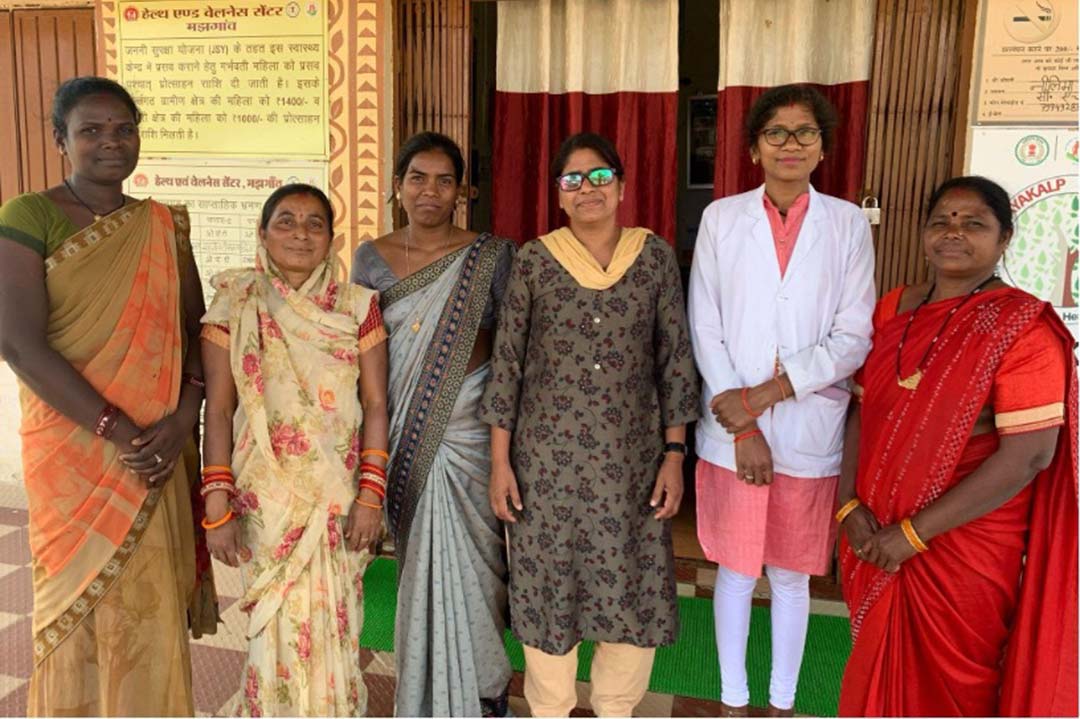
On a hot, sunny day in March 2024, Basanti Akka, a village health worker (VHW) from the non-governmental organisation Jan Swasthya Sahyog (JSS) walked to Seema Kujar's home in Aurapani, a village in the central Indian state of Chhattisgarh.
Kujar's baby, just 18 days old, was showing symptoms of a cold, and the young mother was worried. Even mild respiratory symptoms can turn into pneumonia. Here, in rural Bilaspur district, where advanced medical care is difficult to access, that can be especially dangerous.
Aurapani is home to a "tribal" community, meaning an indigenous people formally considered economically and socially marginalised in India. Just under a third of Chhattisgarh is tribal, and more than half of that population lived below the poverty line as recently as 2012.
"This app addresses the power of decision-making of VHWs, who are neo-literate. It empowers the local health workers to decide whether the patient needs to go to the hospital. This was very important during COVID when hospital beds were running short. Now we use it to save lives from pneumonia."
– Dr Gajanan Phutke, Shwaas co-creator
Many tribal villages are located in forests, poorly served by basic amenities, including roads. And while the number of primary health centres (PHCs) serving rural parts of the state increased significantly between 2002 and 2021, according to a National Health Mission report, more than 40% of posts for doctors at those PHCs remained vacant. In conditions like these, village-level health workers, like the JSS VHWs, or like government Mitanin workers – who typically rely on just basic medical training – are indispensable.
Kujar fed the infant as Akka asked a series of 20 questions. Was the child eating regularly? Were there signs of a fever? Was the baby active? She consulted her phone for further guidance – open on its screen was an app called Shwaas, a word that translates to "breath".
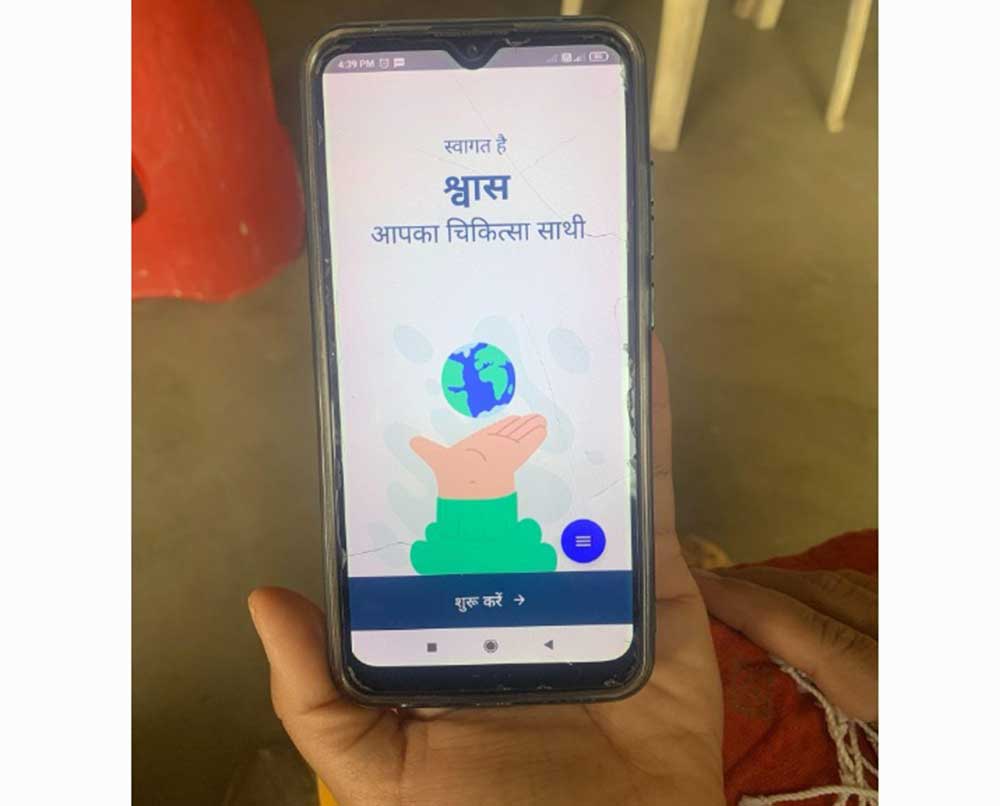
Credit: Sweta Daga
Developed in the crisis phase of the pandemic by family medicine and public health specialist Dr Gajanan Phutke, together with a team drawn from JSS and a Bengaluru-based tech non-profit, the Samanvay Foundation, Shwaas was first used to help frontline health workers diagnose COVID-19 cases. Between October 2020 and March 2021, JSS frontline workers screened more than 2,000 patients in 72 villages for the coronavirus, guided by the app.
Have you read?
In 2022, as COVID-19 subsided in India, the medical team at JSS proposed that Shwaas could be retooled to detect other diseases – specifically pneumonia, since the app comes with an in-built breath-counter facility . According to UNICEF, 11% of deaths in Indian children under five years old each year are a result of pneumonia; in Chhattisgarh, nearly 1,000 children under five, the vast majority of them infants, were officially reported to have died of pneumonia in 2022–2023 alone. Tachypnoea, or abnormally rapid breathing, can be a sign of pneumonia – but counting a child's respiratory rate by visual judgement alone is difficult. Simple breath-counter tools have been shown to significantly help frontline workers achieve correct diagnoses.
"During COVID-19, we realised that we didn't have enough breath-counting machines, and we didn't have the time to produce more and train people as well. Rapid scale was not possible with the machines and training," Dr Phutke explains. "We ended up using paper and pen because of the urgency, but soon we digitised the process to support our senior health care workers.
"We developed an algorithm that asked 20 simple questions to help the frontline workers notice the immediate danger signs. The significance of this app is that it addresses the power of decision-making of VHWs, who are neo-literate. It empowers the local health workers to decide whether the patient needs to go to the hospital. This was very important during COVID when hospital beds were running short. Now we use it to save lives from pneumonia. The solutions we design in our area are for everyone in India, and we know that if it works in our tribal areas, it will work anywhere."
Over the past four years, JSS has trained 150 frontline health workers to use the Shwaas app. In 2023, across 72 villages, 12,811 patients with fevers and respiratory symptoms were screened with Shwaas.
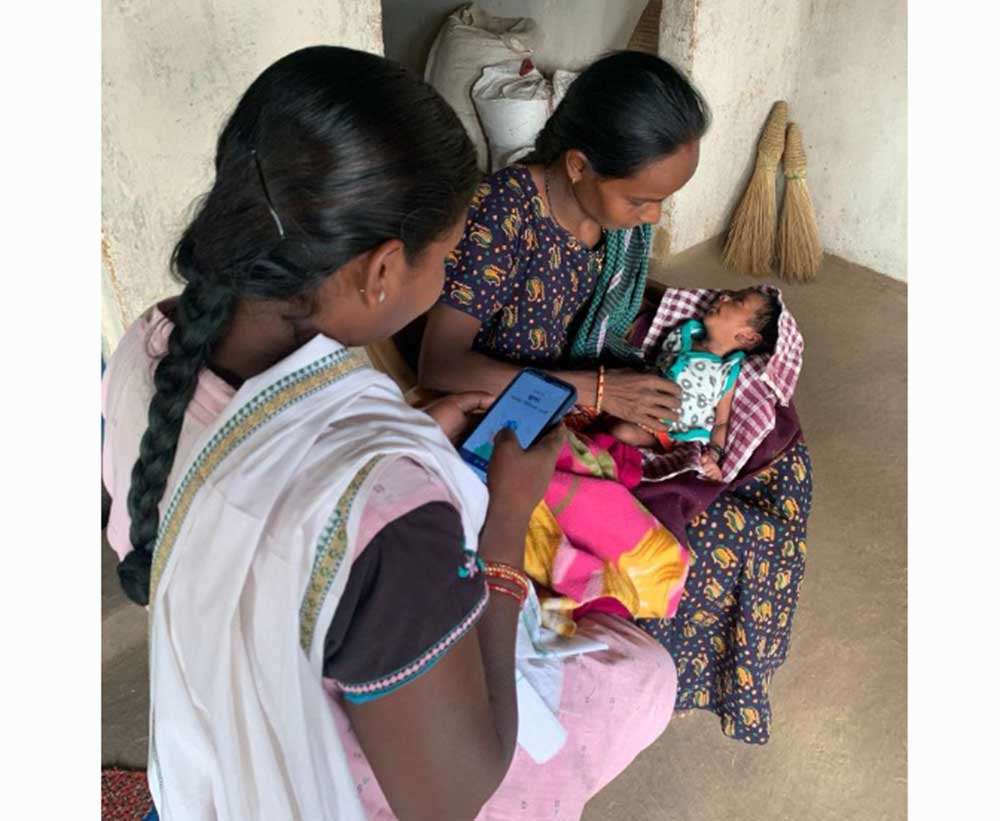
Credit: Sweta Daga
When Basanti counted the number of children under five she had screened with help from the app, she realised that she had referred no fewer than 75 children – who might otherwise have become precipitously sicker at home – for facility-based care. She appeared astonished by the scale of her intervention, and sobered by the thought of the tragic outcomes she might have helped avert. "We never give focus on the lives we save," she says. "We always think about the lives we lost and how to get better."
A JSS maternal and child health worker , or MCH, called Raj Kumari, similarly counted more than 75 clinic referrals for kids under five over the past two years. "This app has helped ensure I don't miss any questions. It's offline, so we don't need a phone network for it. Of course, not every frontline worker has an Android phone, so that is a limitation, but I use it every day. All of us with phones do."
“Pneumonia impacts children from vulnerable backgrounds more often because of lack of nourishment, but we are able to repurpose this resource now to reduce deaths.”
– Dr Gajanan Phutke, Shwaas co-creator
One of those referral patients was Uma Jagath's baby, who developed flu-like symptoms last year. The app's 20 questions signalled suspected pneumonia – Kumari, working closely with her government-employed Mitanin counterpart, Sumitra Yadav, sent the child to the nearest village sub-centre, where she was treated on the ward for three days before showing signs of improvement.
"Pneumonia impacts children from vulnerable backgrounds more often because of lack of nourishment, but we are able to repurpose this resource now to reduce deaths," says Dr Phutke. "With a simple digital breath counter and mobile technology, we can continue to scale up."
